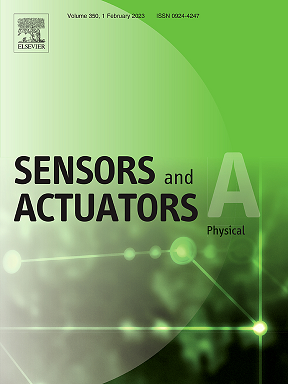Humidity sensing properties were investigated for a thermally stable, high surface area and porous composite material composed of iron oxide/silica (Fe:Si as 1:10 atomic ratio). The investigated composite material was formed by calcination for 3 h at 600 °C of the xerogel precursor, obtained via a formamide-modified sol–gel process. The produced composite material was characterized by a high surface area, SBET = 557 m2 g−1, microporosity, Sαs = 533 m2 g−1, average pore size amounts to 2.1 nm, and average particle diameter amounts to 4.3 nm. Humidity sensing properties were measured by direct current (DC) electrical measurements and impedance spectroscopy (IS). The DC bulk conductivity and the relaxation frequency determined from the analysis of the IS spectra, showed similar dependences on RH, whereas the dielectric constant (ɛb) was close to that of a continuous water phase and was independent on RH for RH > 45%. The present results are discussed in terms of the established models proposed for humidity sensing by metal oxides due to monolayer, multilayer and condensation of water molecules on oxide surfaces. The efficient sensing properties observed for the investigated nanocomposite material were explained in terms of its nanoporous texture.


